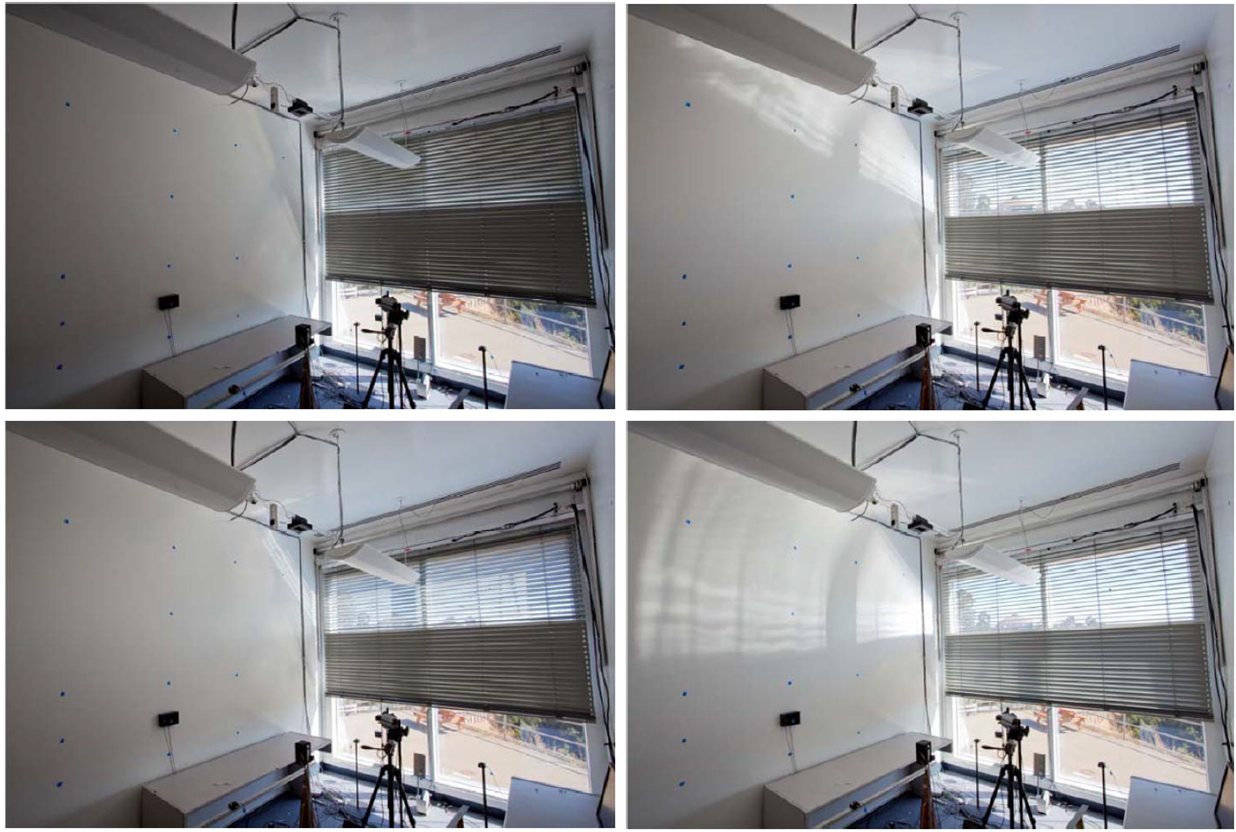Multi-zone Daylighting + Shading Systems
Zoning or assigning unique functions to specific areas of the window wall is a common approach to enhancing daylight and controlling glare. The lower window permits a view out and is controlled by the occupant, while the upper window is reserved for daylight admission. Zoned, interior venetian blind systems can provide such functions. The lowest-cost solution is a conventional blind where the slat angles of the upper and lower sections differ and are ganged to move together (dependent relationship). A variant of this is to use two separately mounted blinds so the slats can be controlled independently. LBNL conducted field tests of these types of systems to evaluate energy performance and impacts on visual comfort.

Daylight redirection produced by a motorized mirrored louver system. The upper and lower blinds are served by one motor which lifts and tilts the blinds automatically. The upper blinds have mirrored concave up slats which are tilted to redirect daylight to the rear of the room. The lower blinds control glare in the view portion of the window wall. Note: This image shows a sequence of tilt angles for a single solar condition; these are not the actual tilt angles that would have been selected by the automated system.



